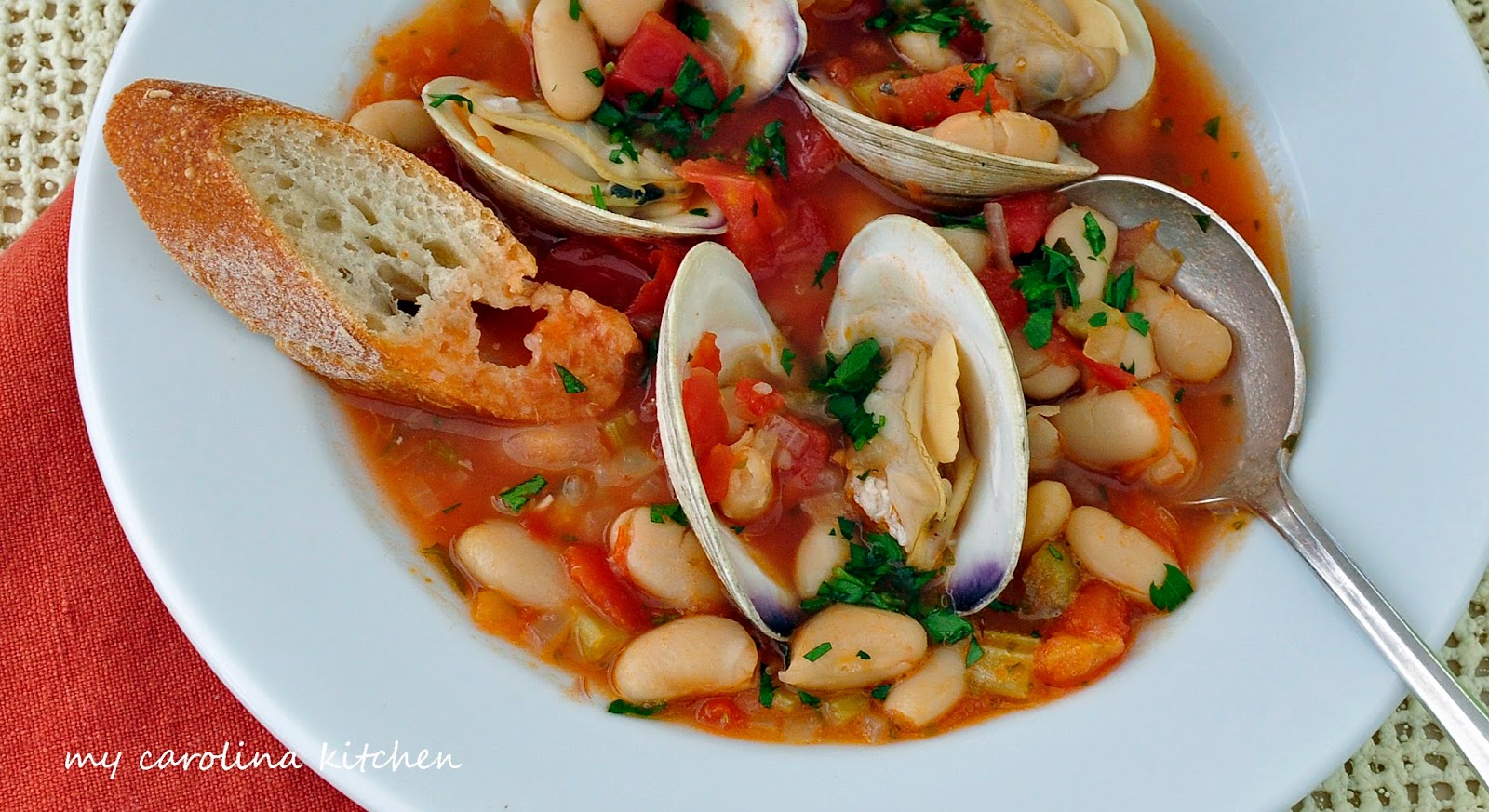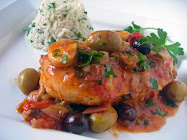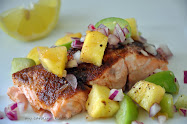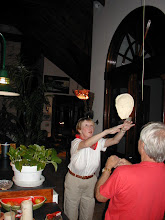Asparagus is one of our favorite dishes to serve at Easter. It spells springtime for me and besides, most everyone loves asparagus. I usually poach the asparagus because it holds up well at room temperature or it can be served chilled. Foods that can be served at room temperature are a real plus. They can sit on a buffet while the main meal is being put together or they are perfect to take to someone else’s house.
I’ve chosen a very simple asparagus dish to feature this year – poached asparagus spears drizzled with a lemon vinaigrette and garnished with sliced lemons.
Grilled asparagus lovers take note - this recipe will work for you as well. Just grill the asparagus instead of poaching it, drizzle with the lemon vinaigrette, garnish with the lemon slices and you’re good to go.
If you prefer to steam your asparagus, then steam them rather than poaching them and proceed with the remainder of the recipes calling for the poaching method.
You’ll also find a medley of 5 of our other favorite asparagus recipes shown below. They are also perfect for your Easter table or for that matter, any time of the year. Any of these recipes can be doubled or tripled to feed a crowd.
Asparagus with a Lemon Vinaigrette
My Carolina Kitchen by Sam Hoffer – serves 6 - easily doubled or tripled
Printable Recipe
For poached asparagus, My Carolina Kitchen’s Basic Recipe for Poached Asparagus is shown below. If you prefer to GRILL or STEAM your asparagus, just dress the grilled or steamed asparagus with the lemon vinaigrette, garnish with sliced lemons and serve right away.
Garnish
2 lemons, sliced thinly and seeds removed
Lemon Vinaigrette
1 tablespoon freshly squeezed lemon juice
3 tablespoons extra virgin olive oil
½ to 1 teaspoon Dijon mustard to taste
1 tablespoon finely chopped shallots
Dash of hot sauce such as Tabasco
Maldon sea salt, or other good sea salt, and freshly ground black pepper to taste
Place all of the ingredients into a jar with a tight fitting lid and shake well. Easily doubled or tripled. Set aside while you cook the asparagus. This vinaigrette saves well in the refrigerator for a day or two. The mustard is used to emulsify the vinaigrette and keeps it from separating and the shallot and hot sauce bring added flavor and are highly recommended.
My Carolina Kitchen’s Basic Recipe for Poached Asparagus
From My Carolina Kitchen – Sam Hoffer
1 lb fresh asparagus, tough lower ends snapped off
2 teaspoons salt
Water flavored with low sodium, low fat beef broth* to taste
After tough ends of asparagus have been removed, peel the remaining ends unless the asparagus is thin; if thin, leave as is. Bring water flavored with beef broth and 2 teaspoons salt to a boil in a shallow pan. Add asparagus, turn heat to low and cook for about 4 minutes until asparagus is crisp tender, taking care not to overcook. Immediately plunge the asparagus in an ice water bath to stop the cooking and retain the green color.
After a minute or two, remove the asparagus and dry well with a towel. Dress with a vinaigrette. Then you may either chill it for about an hour or serve it at room temperature.
Cook’s notes: I like to flavor my asparagus water with beef broth. It isn’t necessary, but it does bring a very nice flavor to the cooking broth.
Asparagus with Fig Vinaigrette & Shallots uses fig balsamic vinegar to make rich, dark vinaigrette, tossed in some chopped shallots, and served it over crispy poached asparagus at room temperature. Chopped Mission figs can be added to the garnish if you wish for even more fig flavor. My basic vinaigrettes are always three parts oil to one part vinegar or acid.
Feel free to grill or steam the asparagus rather than poach it, then top the asparagus with the fig vinaigrette and the garnishes.
Printable recipe
Pin it
Grilled Asparagus with Melon & Fresh Mozzarella Cheese shown above is a very versatile recipe in that the asparagus can be cooked outside on a gas or charcoal grill or in your kitchen on a stove top grill, which is what I did. The melon and cheese make a great fresh topping full of flavor and have real eye appeal, plus it tastes great. What more can you ask for from a recipe?
Printable recipe
Pin it
Asparagus Mimosa, also known as Asparagus Goldenrod is an elegant, easy to prepare dish that can be made ahead of time. It’s perfect for an Easter buffet and is an ideal companion to baked ham. Basically it is poached asparagus, served cold with a light vinaigrette and garnished with grated hard-boiled eggs and capers shown above or with chopped radishes shown below. It’s known as Asparagus Mimosa because the grated hard-boiled eggs resemble mimosa blossoms. The name Goldenrod comes from the bright green asparagus garnished with yellow egg yolks. Classic dishes such as this were a mainstay on the menus of the grand hotels in a bygone era.
If you wish to grill or steam the asparagus, toss the grilled or steamed asparagus with the vinaigrette and garnishes either with the grated eggs and capers or radishes.
Printable recipe with capers
Pin it
Printable recipe with radishes
Pin it
Asparagus served on a Bed of Arugula with Roasted Red Peppers & Kalamata Olives is super easy to prepare and very impressive on the plate. It’s broken down into three recipes, two of which are very basic recipes that are nice to know how to make without needing a recipe - poached asparagus and a basic balsamic vinaigrette. The last is the gussied up part – the arugula and the toppings of roasted red peppers, red onions, and kalamata olives.
Again, you could grill or steam the asparagus if you wish, then toss in the vinaigrette, serve on the arugula and garnish with the roasted peppers and olives.
Printable recipe
Pin it
Asparagus with Hearts of Palm, Grape Tomatoes & Silvers of Red Onion tossed in a Lemony Olive Oil Vinaigrette is easily put together in 15 minutes or less and is very colorful on the plate. The hearts of palm give it a tropical twist.
This recipe would work equally well with grilled asparagus. Toss the asparagus in the vinaigrette and garnish with the hearts of palm, grape tomatoes & slivers of red onion.
Printable recipe
Pin it
For better viewing, click photos to enlarge.
We hope each of you have a blessed Easter.



.jpg)

















































